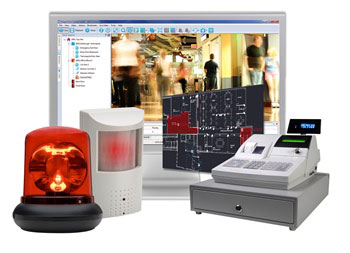
3 problems facing your airport security system in 2021 (and how to fix them)
Managing a large-scale airport and keen to tighten up security? Upgrading airport security is a perennially vital topic – and with good reason. From airport security scanners and boarding security, to rigorous baggage screening practices, no stone should be left unturned.
Today, the stakes are higher than ever and in the wake of Covid-19, the consequences of an outdated system can jeopardise public health. Now, with the volatile situation, airports need to optimise what they have so they can do more with fewer resources. Flight operations being more volatile makes balancing limited resources with predicted demand even more challenging than they were pre-Coronavirus. Besides that, the predicted demand is largely based on historical data from the "old normal".
With the changing landscape, airport security operators need maximum flexibility to cope with last-minute changes in flight operations. Airport security system upgrades might seem like a logistical nightmare, making sticking to the status quo the default position.
But over time, a clunky security system impacts not only the safety of passengers but the efficiency of operations. The result? Ineffective resource allocation that impacts the bottom line. Eventually, there comes a time when the status quo becomes untenable. At this point, broadening your view to consider other airport surveillance systems is key – while also adapting to the ever-evolving pandemic rules. Put simply, you can’t put a price on safety and personal duty of care.
In the past, the drive to maximize revenue was focused on increased passenger yield and contracting new airlines and routes. But currently retail offerings are reduced and focus is on enabling airlines to operate with confidence (distancing, hygiene, occupancy management, mask detection on hot spots), plus flexibility. A different set of Business Intelligence is required for these needs.
So what are the telltale signs that suggest an upgrade is in order? In the following post, we explore the reality of airport surveillance, the problems that persist today, and some aviation security services that can future-proof operations...
Problem 1: Inefficiencies that reduce response times
For airports, remaining vigilant to potential threats is a demanding but vital role. While accidental breaches are common, investigating each alarm call requires additional resources and manpower. If a traveller unintentionally triggers an alarm, staff must quickly respond to the incident without inconveniencing other passengers – and all whilst keeping them safe through social distancing and Coronavirus-containment methods.
Unfortunately, balancing these competing demands is a daily reality for staff. Without supporting tools in place, the prospect of a real alarm can be a costly, logistical nightmare, as Jurgen Klijn, Senior Sales Director North Europe at IndigoVision notes:
Within a few minutes security officers need to investigate whether an alarm is real or not. If it's a real alarm, then that’s serious. They need the fire brigade and to close off parts of the airport. That is one of the security teams’ biggest stresses so if they can avoid that they’ll be happy.
Needless to say, differentiating between real and false alarms is a labour-intensive process; if video footage is unavailable, staff are forced to conduct spot checks and evaluate the issue in person. In such instances, the use of airport security software provides instant updates in real-time, helping them identify real alarms, and take action immediately.
Problem 2: Lack of sufficient operational oversight
Monitoring security and flow rates simultaneously can prove an uphill battle. One key challenge faced by airports is effective coordination, both concerning real-time updates, and inputs on passenger flows. If you are manning several control rooms, achieving effective oversight will require significant manpower. Unsurprisingly, this heavy resource dependence is costly to sustain long-term – especially when teams may be reduced now.
Conversely, a centralised security control room can provide more effective oversight, with the integration of smart analytics further supporting this process, as Jurgen Klijn explains:
An airport can easily have 1,000 cameras or more. You cannot look at all the cameras at the same time and still pick up if there's something abnormal happening. So you need smart analytics for that to help you – at least presenting suspicious activities – and showing that to guards and operators, letting them decide what to do next.
With an integrated user interface, you address airport surveillance and congestion simultaneously, identifying issues at earlier stages. This integrated functionality optimises existing workflows, improving the airport security process and maximising passenger safety and wellbeing with respect to the Covid-19 pandemic.
But what about outside of the terminal? Perimeter security systems can be synced with the central control room, enabling you to set virtual tripwires that prevent unlawful entry. Through this airport surveillance system, you can capture evidence of threats, hone in on particular details, and mitigate their potential impacts on passenger flows and perceptions.
Problem 3: Poor Business Intelligence and reliance on manual systems
From analysing security breaches to ensuring boarding security, meaningful, data-driven insights support the decision-making process. Yet the utility value of this data depends on the quality of Business Intelligence. So what stops these vast swathes of data from being harvested effectively in practice? For Jurgen Klijn, reliance on manual systems prevents accurate reporting in real-time:
Every airport already has a lot of data. A lot of it is developed from the moment that it's generated and then forgotten about five minutes, a day or a week later.
Without the right tools in place, extracting meaningful insights from the data is an impossible task for staff. Instead of receiving updates in real-time, reliance on manual systems means data is viewed retrospectively. This limits it's utility value for forecasting future events. With the environment ever evolving on the ground, staff must remain abreast of these changes to act with immediate effect, utilising the data they already have.
By investing in Business Intelligence, airports can harness updates in real-time to improve their average response times. Additionally, they can use predictive analytics to evaluate past events, and anticipate future threats that jeopardise airline security. Thanks to these integrated systems, staff can make shrewd, strategic decisions based on accurate updates in real-time.
How can security systems address the challenges of Covid-19?
Passenger-flow management, based on efficiency, is now based more on safety and wellbeing, using as many touchless processes as possible.
Alongside the aforementioned issues, the challenges of Covid-19 make aviation security a top priority. The heightened risks posed by the virus prompted the instatement of additional checkpoints, with thermal screening and health checks ubiquitous at major airports.
However, smaller airports with basic infrastructure may rely on manual health checks, which are not only timely to deploy but ethically contentious as well. In this sense, the tech used for aviation security systems can depersonalise body screening airport techniques. As these systems are based on data, they increase compliance from customers, while expediting the check-in process as Jurgen reveals:
If someone is walking around and a member of staff said, "you're not allowed to board this aircraft" then it might feel like a personal thing. If there's technology which says “No” and a red blinking light then that operator can say, "The system has decided that you are not fit to fly.
AGORA’s Standard Operating Procedures guide operators through the steps they need to take to deal with Covid-19, plus any other type of security alert which may arise. This system uses a network of real-time alerts that reduces the risk of Covid-19 transmission. This ensures speed and consistency of response, no matter which operator is working that day and prevents minor bottlenecks from becoming major, long-term problems.
Are there additional benefits to upgrading airport security systems?
Although this list is far from exhaustive, the signs mentioned above should definitely sound alarm bells. Rather than taking a short-term approach, an airport security system should be seen as a long-term investment, benefitting multiple departments on-site.
In this respect, remote video surveillance supports staff on the ground, allowing for earlier identification of incidents and swifter response times to crises. Sharing these insights through a central system can further support this process, providing effective oversight of airports and the changing conditions within them.
In this sense, the use of analytical tools can provide instant updates in real-time; through spotting recurrent patterns, staff can use the insights they gain to predict future patterns. By managing these threats effectively, airports can reduce potential stressors, creating a positive security experience that meets the needs of all stakeholders.
Find out how your airport could benefit from IndigoVision’s security surveillance solutions with our complete guide.







